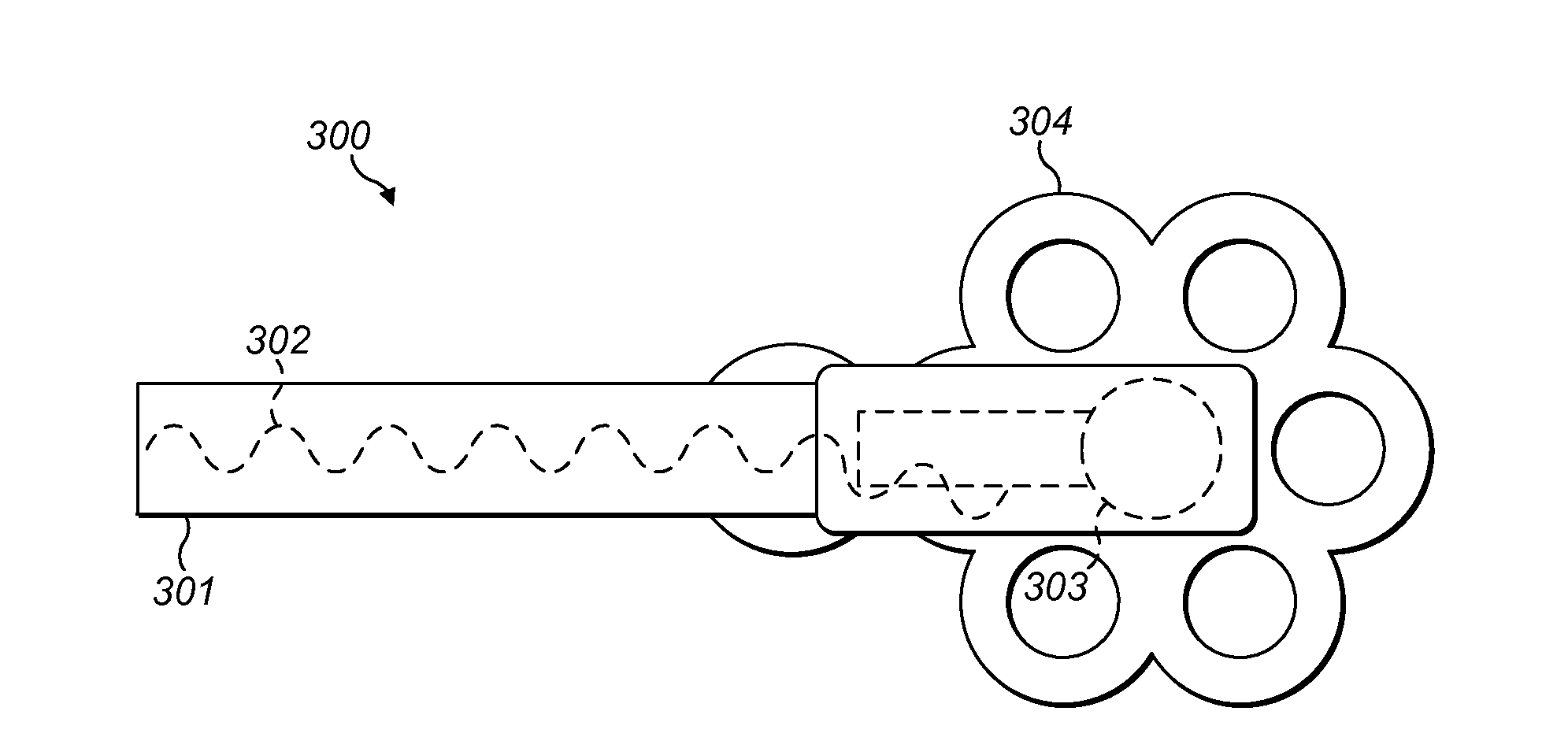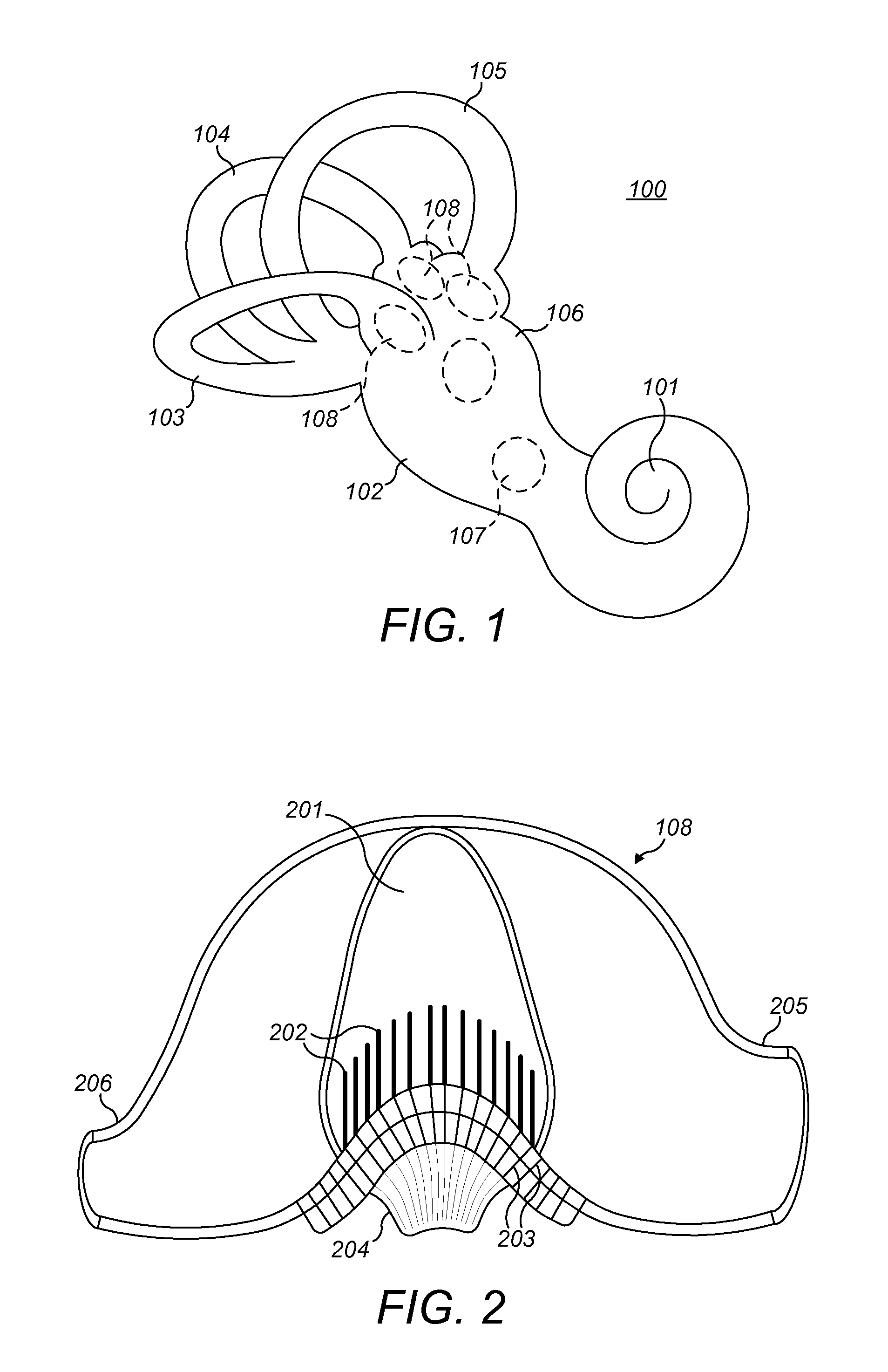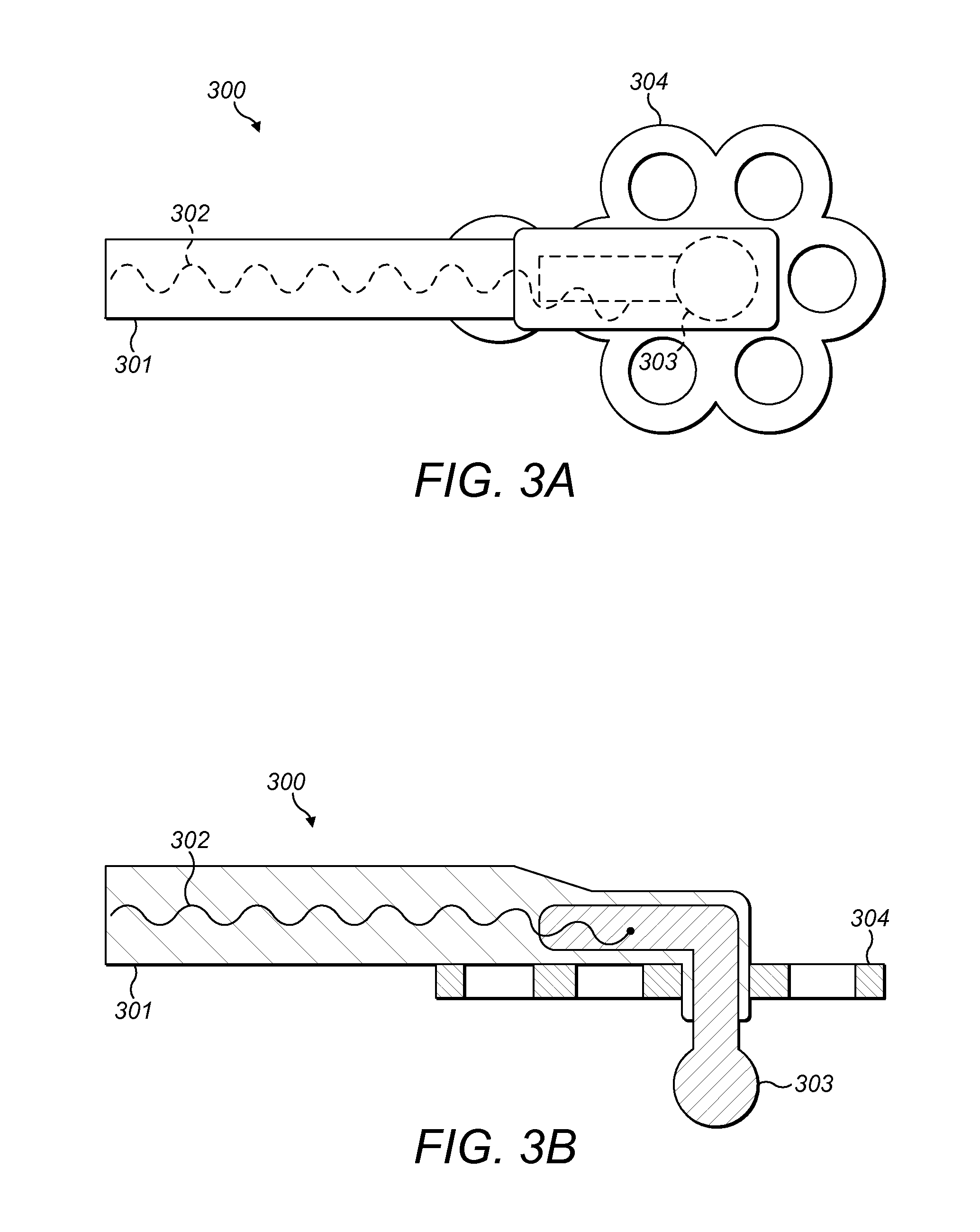Fenestration Electrode to Treat Patients with Meniere's Disease
a technology of fenestration electrodes and meniere's disease, which is applied in the direction of internal electrodes, head electrodes, therapy, etc., can solve the problems of unsteady vision, vertigo (feeling of rotation), and damage to or impaired vestibular systems of peopl
- Summary
- Abstract
- Description
- Claims
- Application Information
AI Technical Summary
Benefits of technology
Problems solved by technology
Method used
Image
Examples
Embodiment Construction
[0021]Embodiments of the present invention are directed to a fenestration electrode that exploits the advantages from both intra- and extra-labyrinthine electrodes while avoiding their disadvantages. A fenestration is a drilled opening into the vestibular labyrinth performed during a labyrinthotomy surgery. The labyrinthotomy may either penetrate the endosteal layer that covers the bone on the inside of the vestibular labyrinth, or it may leave the endosteum intact. A stimulation electrode is placed within the fenestration to deliver stimulation signals for treatment of Meniere's disease.
[0022]The fenestration electrode is tailored to the specific requirements for stimulation electrode to treat Meniere's disease but might also be used for other vestibular disorders where treatment by means of providing electrical stimulation to the vestibular nerve is applied. The surgical technique to make a fenestration opening into the vestibular labyrinth is already known by surgeons from existi...
PUM
 Login to View More
Login to View More Abstract
Description
Claims
Application Information
 Login to View More
Login to View More - R&D
- Intellectual Property
- Life Sciences
- Materials
- Tech Scout
- Unparalleled Data Quality
- Higher Quality Content
- 60% Fewer Hallucinations
Browse by: Latest US Patents, China's latest patents, Technical Efficacy Thesaurus, Application Domain, Technology Topic, Popular Technical Reports.
© 2025 PatSnap. All rights reserved.Legal|Privacy policy|Modern Slavery Act Transparency Statement|Sitemap|About US| Contact US: help@patsnap.com



